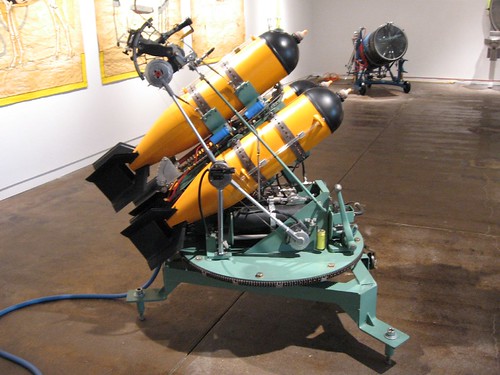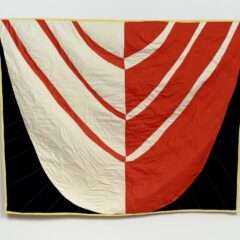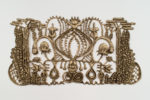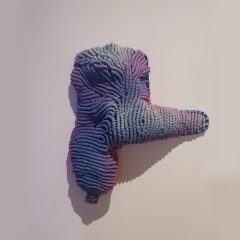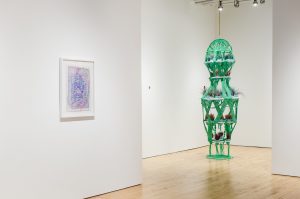Todt is not for the faint of heart. The group makes work about humanity without a moral compass. The parodies of technological experimentation and technology culture are at once horrifying and familiar.
The group goes back more than 30 years. But recently it is back in full force with their exhibit After Next at Fleisher-Ollman Gallery, as well as upcoming exhibits at the Centre Pompidou and at Sideshow Gallery in Williamsburg, and a feature article about them in Sculpture Magazine. But their work is always timely it seems to me given humanity’s penchant to push inhumane agendas, be it war or inappropriate medical experimentation.
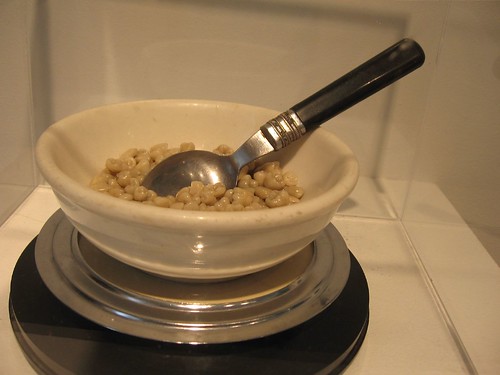
Buchenwald Bowl, 1980; those are teeth in there.
The group–three siblings (plus at one time the spouse of the sister in the group–has a local connection; the sister lives with her husband in Germantown, but the two brothers live in upstate New York.
The heart of this show is in the older works, although there are several recent pieces as well. All of it has the same creepy affect, no surprise from a group that named itself Todt, the German word for death. The word is also the name of Hitler’s Minister of Armaments and Munitions prior to Speer, Fritz Todt.

Phalanx, 1997, 36 x 32 x 13, weed wackers on the march, held by car ski racks
I’d like to say I disliked the exhibit, but it wouldn’t be true. I was repelled, but I thought it quite interesting. There was a piece that seemed to come straight out of Damien Hirst’s arsenal. Barrel Lift 1 includes the fetus of a rat floating in a formaldehyde-filled cube. But the show also offers bits of black humor. I’m thinking of Phalanx, with its array of grass trimmers mounted on ski racks.
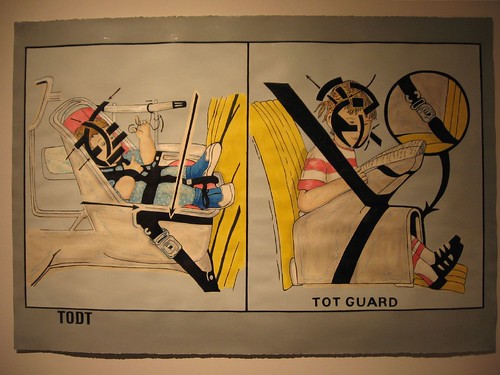
Tot Guard, 1995, paint on paper, 30 x 43.5″
I’m also thinking of the schematic diagram, ostensibly about protecting a child with a car seat, but instead suggesting ambiguous dangers and an overzealous desire for control. The drawing reminds me of old text book illustrations and also has the state uber alles flavor of Neo Rauch’s East German text-book-inspired paintings.
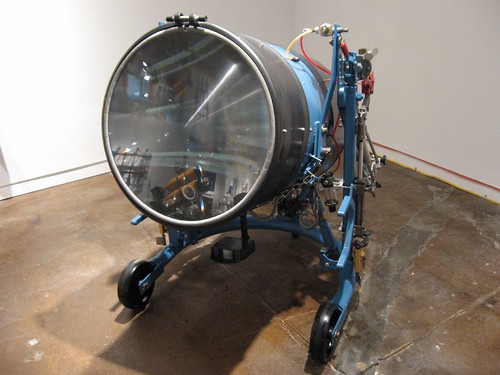
Barrel Lift 1, 1992, 46 x 42 x 37 inches; Inside, there’s the remains of a rat fetus tumbling in a Damien Hirst-like container filled with fluid.
The very slick machine production values of many of the sculptures have a seductive quality and place the taste behind the show in Pop. I’m thinking here of Lichtenstein’s F-111 and Alex Katz’s mechanistic billboard humans. But the subject matter–the complete loss of empathy for our fellow creatures–is unusual for Pop. Some of the cruder pieces were more to my taste, but the unsettling factor pretty much pervades every piece in the exhibit.

Even seemingly innocuous objects such as airline food trays are parodied in this show for their artificial industrial perfection, serving as a reminder that the threat to human values and human survival is ever-present and omnipresent, and yes, it’s in our food supply, and if you don’t know it, I guess you’re not paying attention.


